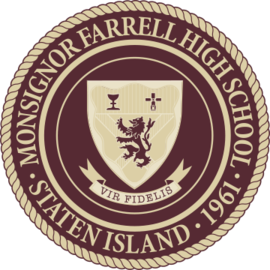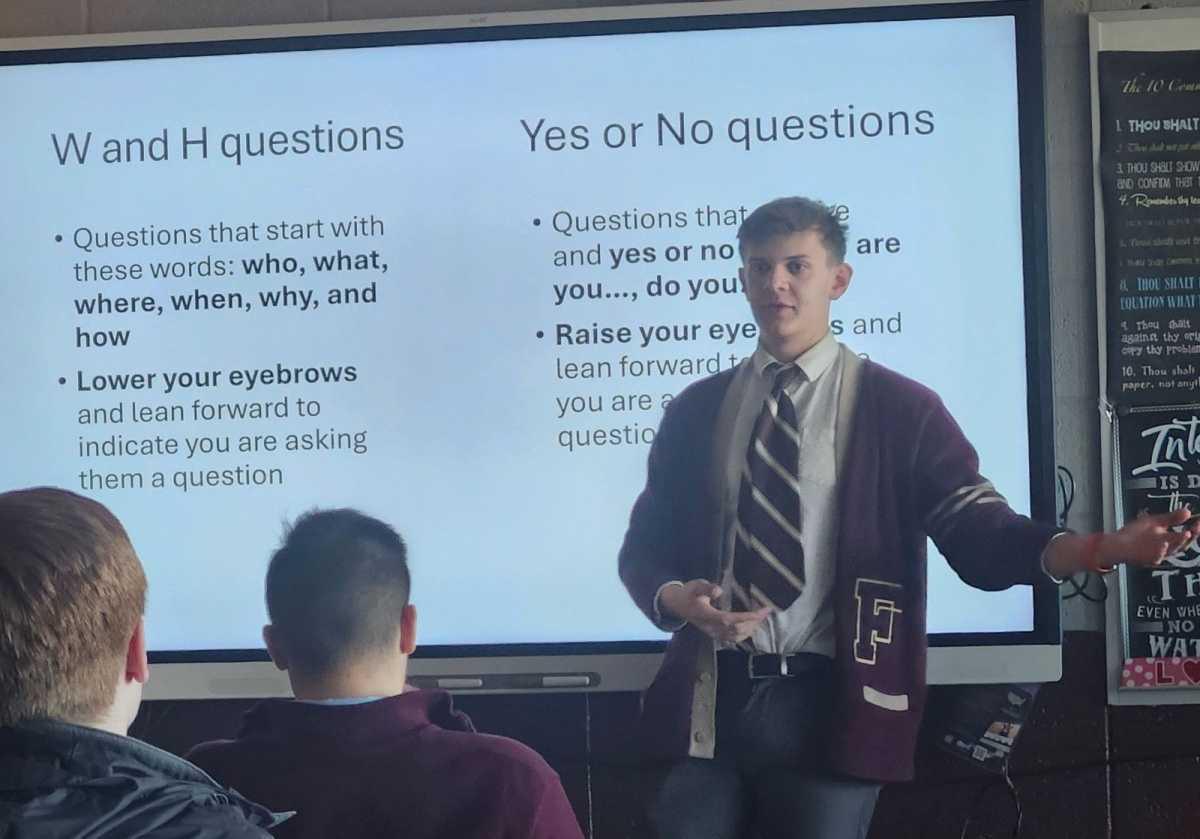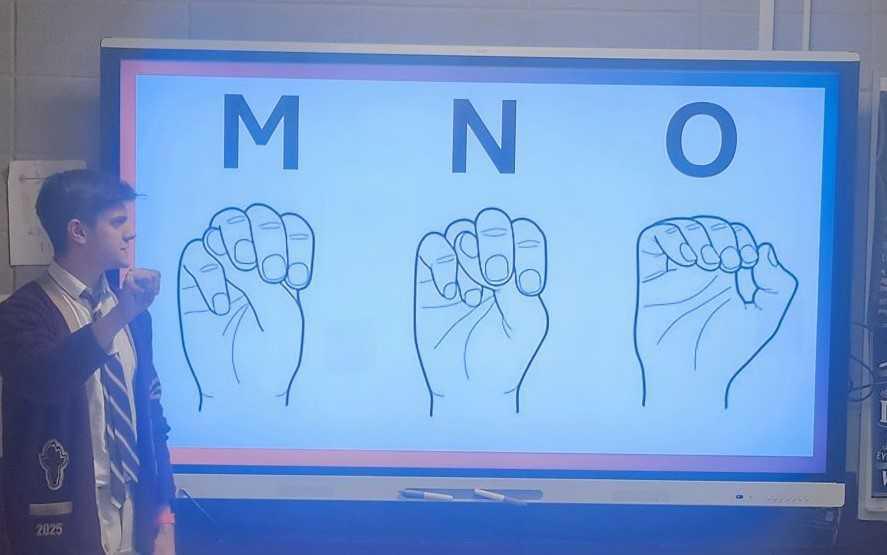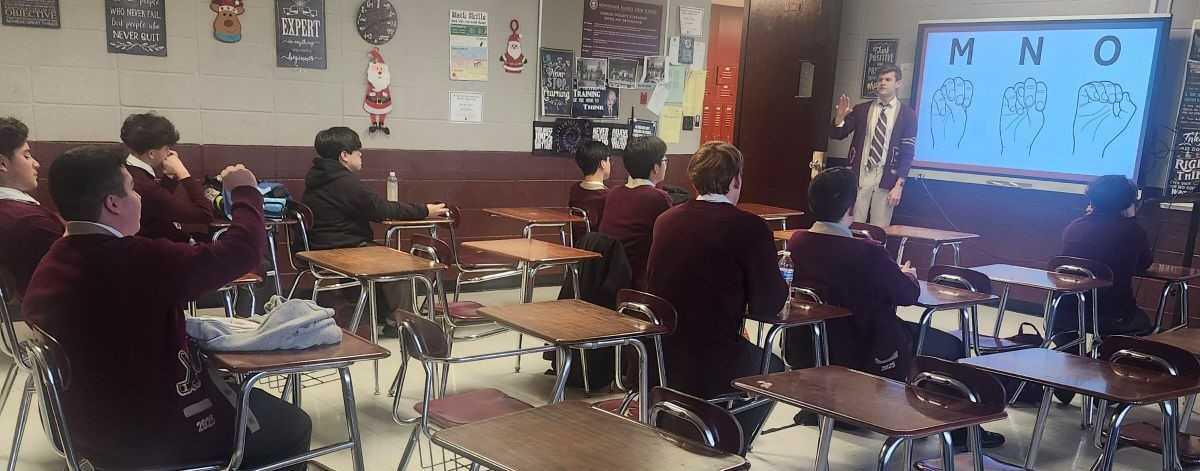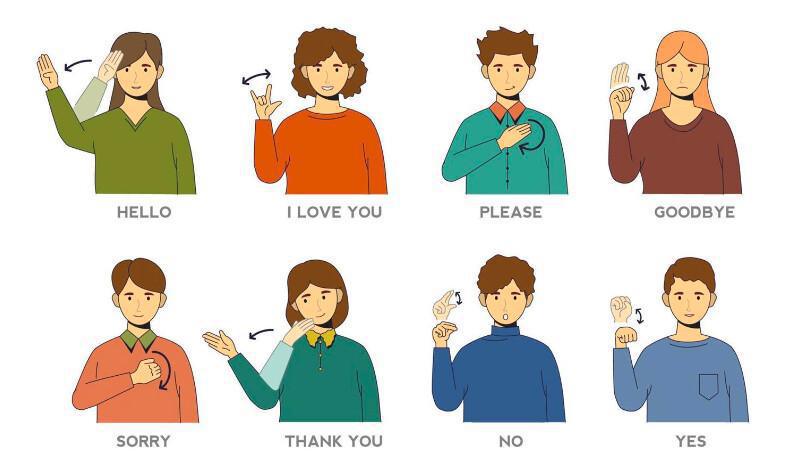Silent voices with a large impact
The ASL Club was formed earlier this year, led by faculty moderator Mrs. Tesoriero and student leader Vincent Barravecchio.
Opportunities to learn a "visual" language with new American Sign Language Club
Throughout the country, there are 11 million deaf Americans. In New York alone, the population of deaf people or people with serious hearing challenges is approximately 700,000 – more than all the population of Staten Island.
As such, one might wonder why American Sign Language (ASL) isn't taught more often. Estimates say that less than three percent of adults commonly use sign language in the U.S.
That number may soon change, however, thanks to the diligent efforts of Monsignor Farrell's new ASL Club, led by faculty moderator Mrs. Tesoriero and student leader Vincent Barravecchio.
The ASL Club goes through new words and phrases weekly.
Mrs. Tesoriero, who has family members who are hard-of-hearing, was speaking with the family of Vincent Barravecchio about teaching ASL. Vincent had always had an interest in sign language and used this as an opportunity to contact Mrs. Tess about forming a club dedicated to teaching it.
A common misconception about ASL is that it is a niche language with very little application in day-to-day life. When asked about this, Barravecchio gave a personal anecdote.
In his place of work, many patrons are deaf. Unsurprisingly, this makes communication difficult. Knowing ASL allows him to easily talk with his customers, and it always brightens their days to know the person they’re speaking to is fluent in ASL.
The club has an average of 10 members that attend per week.
Vincent Barravecchio. '25, leads the club in a review session of sign language material.
"It's fun and unique – it's different from other languages,” Barravecchio said when discussing the appeal of the club.
Mrs. Tesoriero added on by mentioning the universality of the language, being easily adaptable when talking with foreigners even when they have their own versions of sign language.
"Even if you’re not totally fluent, you can have a conversation if you know a lot of the basics," she said.
Although the club is working diligently to educate its members on ASL, sign language isn’t a large part of mainstream education. When asked, Barravecchio said he would be supportive of it becoming more mainstream.
"It is a very visual language," he said. "[It is] hard to learn online or through notes."
The club acknowledges that less people speak ASL then Spanish or Italian, but because it is relatively universal, it is a useful tool to know as it is more adaptable abroad. Furthermore, advocates for making ASL a larger part of education point out how refusing to do so alienates the deaf community, as it revokes their ability to communicate with others effectively.
Meetings will usually begin with the moderator standing before each club member and demonstrating how to do a series of words. The words were signed by the moderator, and a slideshow showing how to sign the word accompanied their demonstration.
When each word had been taught, the group went through each word again to double-check their understanding.
The ASL Club has been led by Barravecchio since its inception, but the keys to the kingdom will soon be handed off to another member of the club as he prepares to graduate.
The ASL club wishes him well on his journey, and they will never forget the impact he left on them – one sign at a time.
The Lion is Monsignor Farrell's student digital newspaper. To read more articles from The Lion, click here.
